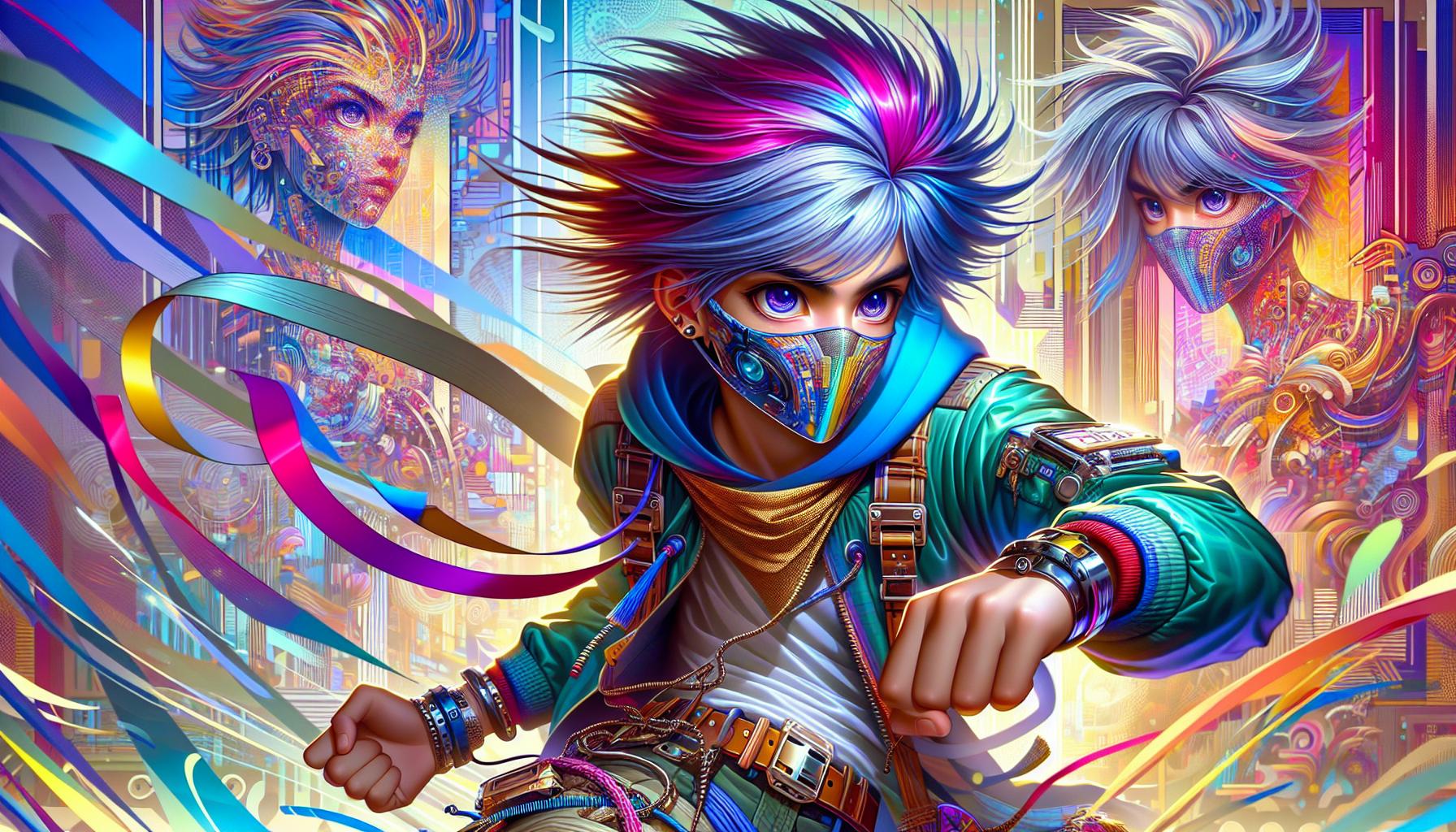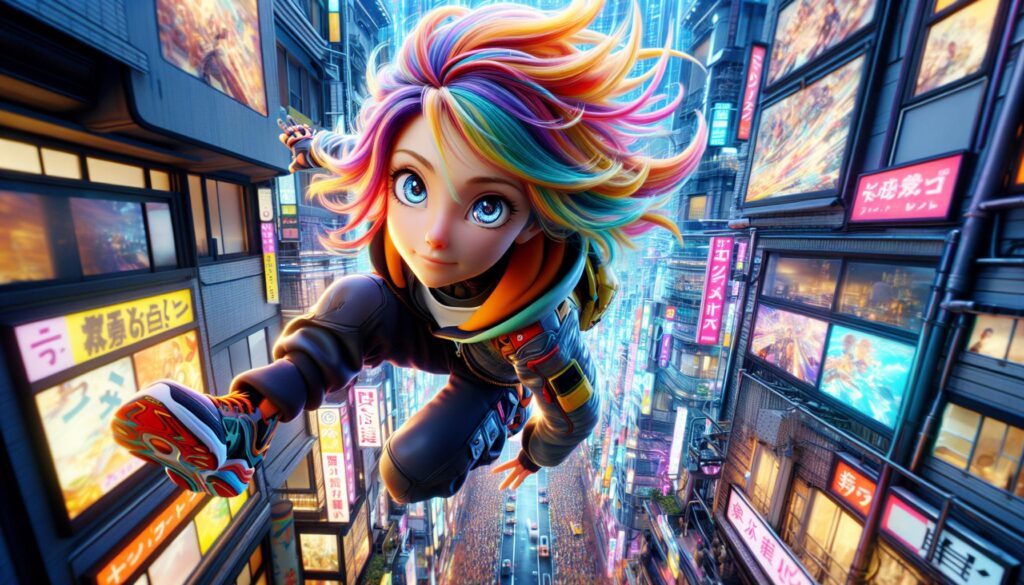Anime has captivated audiences worldwide with its unique storytelling and stunning visuals. As an avid fan, I’ve often wondered about the connection between anime and “dibujos,” the Spanish word for drawings or cartoons. This fascinating relationship reveals the global influence of Japanese animation and its impact on diverse cultures.
In this article, I’ll explore the intersection of anime and dibujos, delving into how these art forms have evolved and influenced each other. We’ll uncover the similarities, differences, and cultural significance of both styles, shedding light on why anime has become a beloved medium across language barriers.
Key Takeaways
- Anime has evolved from Japanese animation into a global phenomenon, influencing diverse cultures and art forms
- The unique visual style of anime, characterized by vibrant colors and exaggerated expressions, sets it apart from traditional Western animation
- Popular anime genres include action, adventure, romance, and slice of life, catering to a wide range of audiences
- Anime’s impact on global pop culture is evident through conventions, cosplay, and its influence on Western animation
- Future trends in anime include technological advancements, streaming dominance, cross-cultural collaborations, and interactive storytelling experiences
Anime:b1ubcszqdxq= Dibujos
Anime, a term derived from the English word “animation,” has evolved into a distinct art form that captivates audiences worldwide. This Japanese animation style has transcended cultural boundaries, becoming a global phenomenon with a dedicated fan base across continents.
Originating in Japan, anime has developed its own unique visual style, characterized by:
- Vibrant colors
- Exaggerated facial expressions
- Dynamic action scenes
- Distinctive character designs
Anime’s storytelling prowess sets it apart from traditional Western animation. It often explores complex themes and tackles mature subjects, appealing to a wide range of age groups. Some popular genres include:
- Shonen: Action-packed series aimed at young male audiences
- Shoujo: Romance and drama-focused stories for young female viewers
- Seinen: Mature themes for adult male audiences
- Josei: Realistic narratives targeting adult women
The global impact of anime is evident in its influence on popular culture, fashion, and even other forms of media. Streaming platforms have made anime more accessible than ever, contributing to its growing international fanbase.
Anime’s success can be attributed to several factors:
| Factor | Description |
|---|---|
| Diverse storytelling | Covers a wide range of genres and themes |
| Visual appeal | Unique art style and animation techniques |
| Cultural exchange | Introduces Japanese culture to global audiences |
| Adaptability | Successfully adapts manga, light novels, and video games |
As anime continues to gain popularity, it’s increasingly recognized as a legitimate form of artistic expression and entertainment. Its influence extends beyond Japan, inspiring animators and storytellers worldwide to incorporate elements of anime into their own works.
The Origins and Evolution of Anime

Anime’s roots trace back to early 20th century Japan, evolving from simple experiments to a global cultural phenomenon. Its journey reflects not only technological advancements but also shifts in artistic expression and storytelling techniques.
Early Japanese Animation
Japanese animation emerged in the 1910s, with pioneers like Oten Shimokawa, Junichi Kouchi, and Seitaro Kitayama producing short films. These early works, often just a few minutes long, used chalk or charcoal on blackboards. The first commercially released animation in Japan, “Imokawa Mukuzo Genkanban no Maki,” debuted in 1917. By the 1930s, animators like Noburo Ofuji and Kenzo Masaoka introduced sound and color, pushing the boundaries of the medium.
Influence of Manga on Anime
Manga, Japanese comics and graphic novels, played a crucial role in shaping anime’s distinctive style and narrative approach. Post-World War II, manga artist Osamu Tezuka revolutionized both mediums with his cinematic techniques and complex storylines. His work “Astro Boy,” adapted into anime in 1963, set the template for future productions. Manga’s visual language, characterized by large eyes, exaggerated expressions, and dynamic panel layouts, directly influenced anime’s aesthetic. This symbiotic relationship continues today, with popular manga series often serving as source material for anime adaptations.
Distinctive Features of Anime Art Style

Anime’s unique visual style sets it apart from other forms of animation. I’ll explore the key elements that make anime instantly recognizable and captivating to audiences worldwide.
Character Design and Expressions
Anime characters feature exaggerated physical traits that convey personality and emotion. Large, expressive eyes dominate facial features, often taking up a third of the face. Hair colors span a vibrant spectrum, from natural shades to vibrant blues and pinks. Character designs incorporate symbolic elements, such as specific hairstyles or accessories, to represent personality traits or character archetypes. Facial expressions in anime are highly stylized, using visual shorthand like sweat drops for nervousness or pulsing veins for anger to quickly communicate emotions.
Visual Storytelling Techniques
Anime employs unique visual techniques to enhance storytelling and audience engagement. Speed lines and dynamic camera angles create a sense of movement and energy in action scenes. Backgrounds often incorporate detailed scenery or abstract patterns to set the mood. Symbolic imagery, such as cherry blossoms for romance or crows for impending danger, adds layers of meaning to scenes. Anime also utilizes distinctive visual effects, like the “bishōnen sparkle” for attractive male characters or exaggerated chibi forms for comedic moments, to convey specific emotions or narrative elements.
Popular Genres in Anime

Anime encompasses a diverse range of genres, catering to various tastes and preferences. I’ll explore two of the most popular genres that have captivated audiences worldwide.
Action and Adventure
Action and adventure anime dominate the industry, offering thrilling narratives and intense fight scenes. These series often feature:
- High-stakes conflicts
- Superpowered characters
- Epic battles and transformations
- Complex plotlines with unexpected twists
Notable examples include “Dragon Ball Z,” “One Piece,” and “My Hero Academia.” These shows blend dynamic animation with compelling storytelling, creating immersive worlds that keep viewers on the edge of their seats.
Romance and Slice of Life
Romance and slice of life anime focus on interpersonal relationships and everyday experiences. These genres are characterized by:
- Relatable characters and situations
- Emotional depth and character development
- Subtle storytelling techniques
- Exploration of cultural norms and social issues
Popular titles in these genres include “Your Name,” “Clannad,” and “K-On!” These anime often resonate with viewers by portraying genuine human experiences and emotions, fostering a strong connection between the audience and the characters.
The Impact of Anime on Global Pop Culture
Anime’s influence has transcended cultural boundaries, shaping global pop culture in profound ways. Its unique storytelling, distinctive art style, and diverse genres have captivated audiences worldwide, leading to a significant impact on entertainment, fashion, and social trends.
Anime Conventions and Cosplay
Anime conventions have become major cultural events, attracting millions of fans globally. These gatherings celebrate anime culture through panels, screenings, and merchandise sales. Cosplay, the practice of dressing up as anime characters, has emerged as a central feature of these conventions. Cosplayers invest considerable time and resources in creating intricate costumes, often achieving stunning levels of accuracy. The popularity of cosplay has led to professional cosplayers, international competitions, and a thriving industry of costume makers and photographers.
Anime-Inspired Western Animation
Western animation has increasingly drawn inspiration from anime’s visual style and storytelling techniques. Shows like “Avatar: The Last Airbender” and “The Boondocks” incorporate anime-inspired elements in their art and narratives. This influence extends to character designs, action sequences, and thematic depth. Western animators now frequently collaborate with Japanese studios, resulting in hybrid productions that blend anime aesthetics with Western storytelling traditions. This cross-pollination has led to a new generation of animated content that appeals to diverse global audiences.
The Future of Anime: Trends and Innovations
Anime’s evolution continues to shape the global entertainment landscape, with emerging trends and innovations propelling the medium forward. I’ve identified several key developments that are likely to define anime’s future:
- Technological advancements:
- 3D animation integration
- Virtual reality (VR) and augmented reality (AR) experiences
- AI-assisted animation techniques
- Streaming dominance:
- Exclusive anime productions by major streaming platforms
- Simultaneous global releases
- Increased accessibility through mobile-optimized content
- Cross-cultural collaborations:
- International co-productions
- Diverse representation in characters and storylines
- Localization of anime for specific markets
- Sustainability in animation:
- Eco-friendly production methods
- Digital distribution reducing physical media waste
- Storylines addressing environmental themes
- Interactive storytelling:
- Choose-your-own-adventure anime series
- Integration with gaming platforms
- Social media-driven narrative experiences
These trends are reshaping anime production, distribution, and consumption. For instance, Netflix’s “Ghost in the Shell: SAC_2045” showcases the potential of 3D animation in traditionally 2D franchises. The rise of VR anime experiences, like “Spice and Wolf VR,” offers immersive storytelling possibilities.
Streaming platforms’ influence extends beyond distribution. Crunchyroll and Funimation now produce original anime series, fostering creativity and diversifying content. This shift enables simultaneous global releases, reducing piracy and enhancing the global anime community’s shared experience.
Cross-cultural collaborations are becoming more prevalent. “Cannon Busters,” created by American animator LeSean Thomas and produced by Japanese studio Satelight, exemplifies this trend. These partnerships introduce fresh perspectives and expand anime’s global appeal.
Sustainability is gaining importance in anime production. Studios like Studio Ghibli incorporate environmental themes into their narratives, while digital distribution reduces the carbon footprint associated with physical media production and distribution.
Interactive storytelling in anime is an emerging trend. Netflix’s “Black Mirror: Bandersnatch” demonstrated the potential for choose-your-own-adventure narratives, a concept that could revolutionize anime storytelling.
As anime continues to evolve, these trends and innovations will shape its future, ensuring the medium remains dynamic, relevant, and captivating for audiences worldwide.
Cultural Boundaries
Anime’s journey from Japanese artform to global phenomenon is truly remarkable. Its unique storytelling captivates audiences worldwide transcending cultural boundaries. The fusion of anime with diverse influences has created a rich tapestry of visual and narrative styles. As technology advances and collaborations flourish anime continues to evolve pushing creative boundaries. With its growing influence on popular culture and entertainment anime’s future looks brighter than ever. I’m excited to see how this art form will continue to inspire and entertain audiences in the years to come.

